Abstract
Bacillus thuringiensis var. kurstaki (B.t.-k) is a microbial pesticide which has been widely used for over 30 years. Its safety for a human population living in sprayed areas has never been tested. Surveillance for human infections caused by B.t.-k among Lane County, Oregon residents was conducted during two seasons of aerial B.t.-k spraying for gypsy moth control. Bacillus isolates from cultures obtained for routine clinical purposes were tested for presence of Bacillus thuringiensis (B.t.). Detailed clinical information was obtained for all B.t.-positive patients. About 80,000 people lived in the first year's spray area, and 40,000 in the second year's area. A total of 55 B.t.-positive cultures were identified. The cultures had been taken from 18 different body sites or fluids. Fifty-two (95 percent) of the B.t. isolates were assessed to be probable contaminants and not the cause of clinical illness. For three patients, B.t. could neither be ruled in nor out as a pathogen. Each of these three B.t.-positive patients had preexisting medical problems. The level of risk for B.t.-k and other existing or future microbial pesticides in immunocompromised hosts deserves further study.
Full text
PDF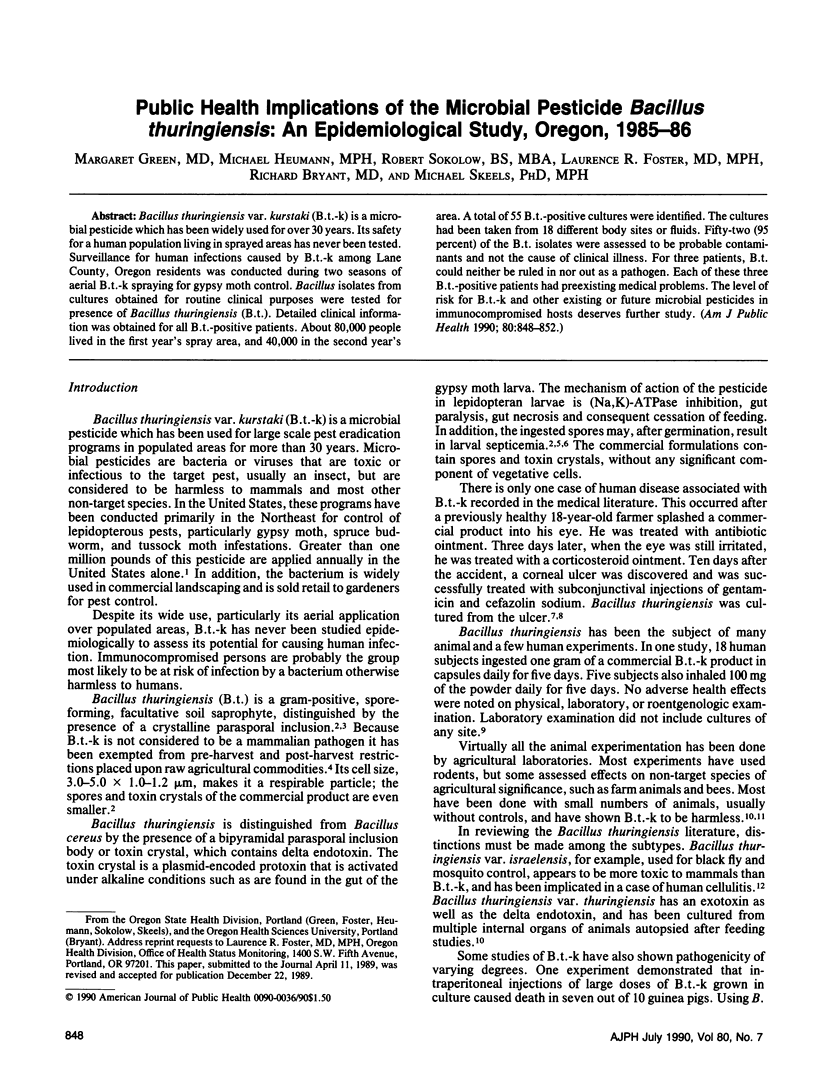
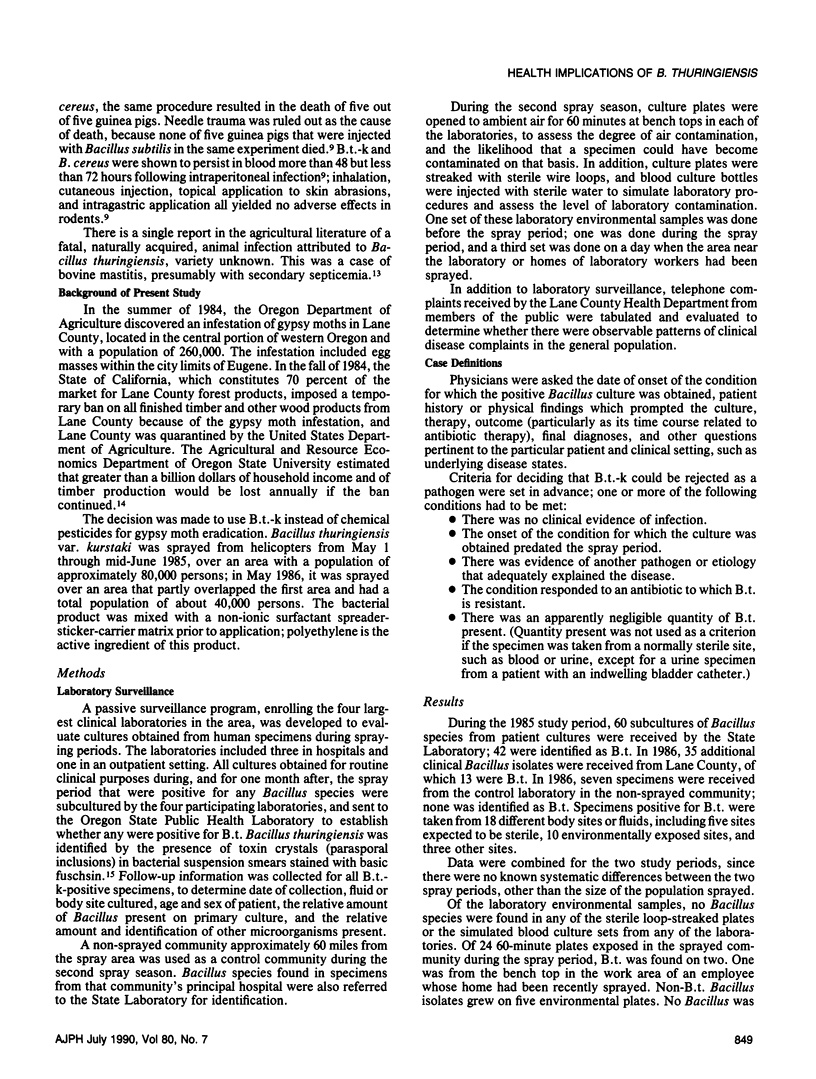
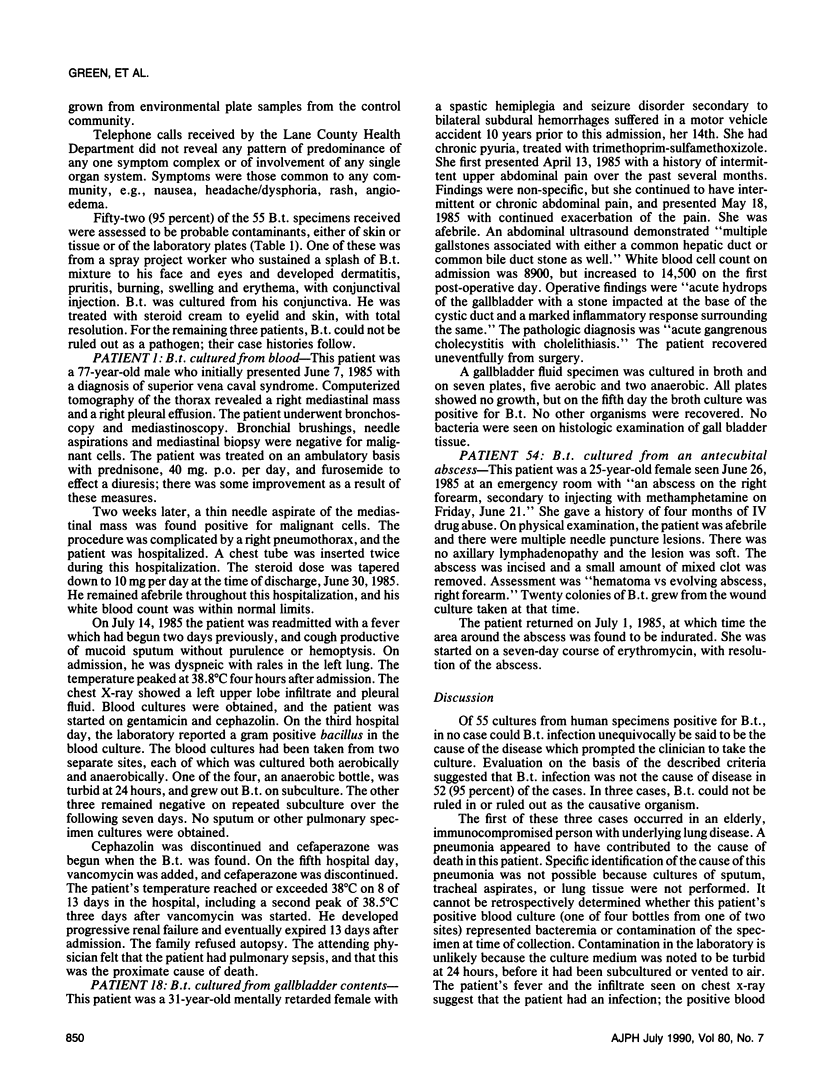
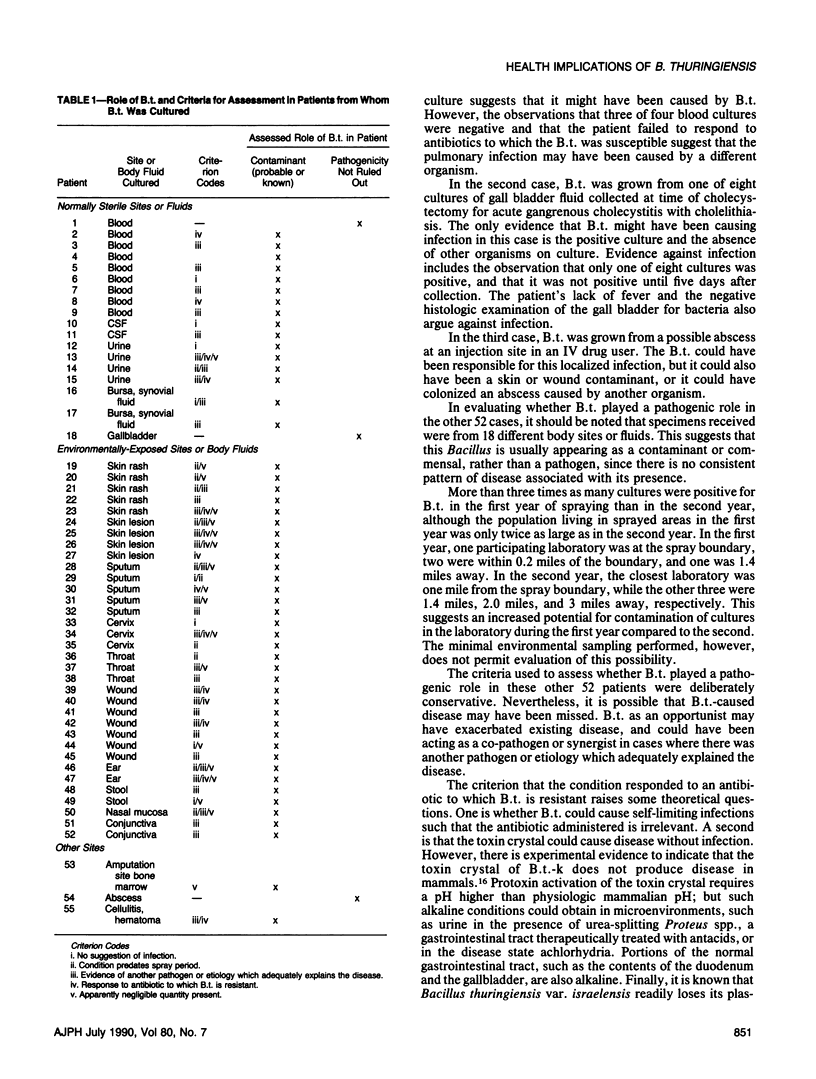
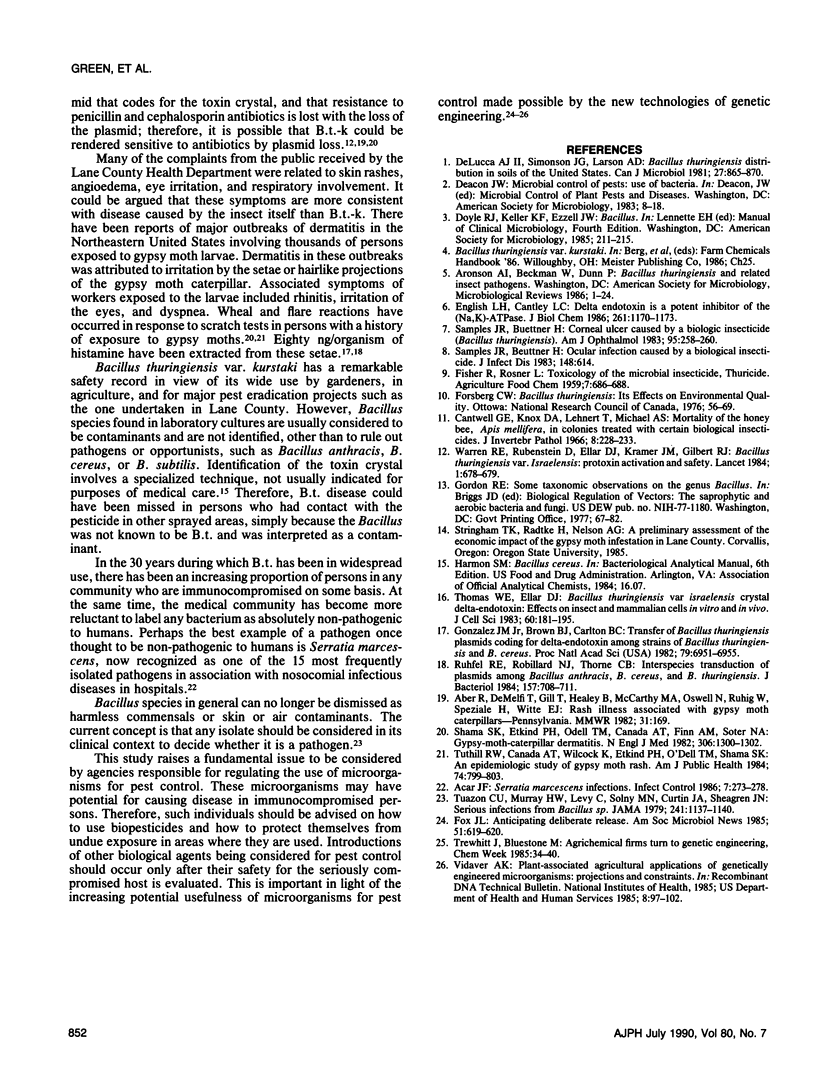
Selected References
These references are in PubMed. This may not be the complete list of references from this article.
- Acar J. F. Serratia marcescens infections. Infect Control. 1986 May;7(5):273–278. doi: 10.1017/s0195941700064201. [DOI] [PubMed] [Google Scholar]
- Aronson A. I., Beckman W., Dunn P. Bacillus thuringiensis and related insect pathogens. Microbiol Rev. 1986 Mar;50(1):1–24. doi: 10.1128/mr.50.1.1-24.1986. [DOI] [PMC free article] [PubMed] [Google Scholar]
- Cantwell G. E., Knox D. A., Lehnert T., Michael A. S. Mortality of the honey bee, Apis mellifera, in colonies treated with certain biological insecticides. J Invertebr Pathol. 1966 Jun;8(2):228–233. doi: 10.1016/0022-2011(66)90133-9. [DOI] [PubMed] [Google Scholar]
- Centers for Disease Control (CDC) Rash illness associated with gypsy moth caterpillars--Pennsylvania. MMWR Morb Mortal Wkly Rep. 1982 Apr 9;31(13):169–170. [PubMed] [Google Scholar]
- DeLucca A. J., 2nd, Simonson J. G., Larson A. D. Bacillus thuringiensis distribution in soils of the United States. Can J Microbiol. 1981 Sep;27(9):865–870. doi: 10.1139/m81-137. [DOI] [PubMed] [Google Scholar]
- English L. H., Cantley L. C. Delta endotoxin is a potent inhibitor of the (Na,K)-ATPase. J Biol Chem. 1986 Jan 25;261(3):1170–1173. [PubMed] [Google Scholar]
- González J. M., Jr, Brown B. J., Carlton B. C. Transfer of Bacillus thuringiensis plasmids coding for delta-endotoxin among strains of B. thuringiensis and B. cereus. Proc Natl Acad Sci U S A. 1982 Nov;79(22):6951–6955. doi: 10.1073/pnas.79.22.6951. [DOI] [PMC free article] [PubMed] [Google Scholar]
- Ruhfel R. E., Robillard N. J., Thorne C. B. Interspecies transduction of plasmids among Bacillus anthracis, B. cereus, and B. thuringiensis. J Bacteriol. 1984 Mar;157(3):708–711. doi: 10.1128/jb.157.3.708-711.1984. [DOI] [PMC free article] [PubMed] [Google Scholar]
- Samples J. R., Buettner H. Corneal ulcer caused by a biologic insecticide (Bacillus thuringiensis). Am J Ophthalmol. 1983 Feb;95(2):258–260. doi: 10.1016/0002-9394(83)90028-4. [DOI] [PubMed] [Google Scholar]
- Samples J. R., Buettner H. Ocular infection caused by a biological insecticide. J Infect Dis. 1983 Sep;148(3):614–614. doi: 10.1093/infdis/148.3.614. [DOI] [PubMed] [Google Scholar]
- Shama S. K., Etkind P. H., Odell T. M., Canada A. T., Finn A. M., Soter N. A. Gypsy-moth-caterpillar dermatitis. N Engl J Med. 1982 May 27;306(21):1300–1301. doi: 10.1056/NEJM198205273062122. [DOI] [PubMed] [Google Scholar]
- Thomas W. E., Ellar D. J. Bacillus thuringiensis var israelensis crystal delta-endotoxin: effects on insect and mammalian cells in vitro and in vivo. J Cell Sci. 1983 Mar;60:181–197. doi: 10.1242/jcs.60.1.181. [DOI] [PubMed] [Google Scholar]
- Tuazon C. U., Murray H. W., Levy C., Solny M. N., Curtin J. A., Sheagren J. N. Serious infections from Bacillus sp. JAMA. 1979 Mar 16;241(11):1137–1140. [PubMed] [Google Scholar]
- Tuthill R. W., Canada A. T., Wilcock K., Etkind P. H., O'Dell T. M., Shama S. K. An epidemiologic study of gypsy moth rash. Am J Public Health. 1984 Aug;74(8):799–803. doi: 10.2105/ajph.74.8.799. [DOI] [PMC free article] [PubMed] [Google Scholar]
- Vidaver A. K. Plant-associated agricultural applications of genetically engineered microorganisms: projections and constraints. Recomb DNA Tech Bull. 1985 Sep;8(3):97–102. [PubMed] [Google Scholar]
- Warren R. E., Rubenstein D., Ellar D. J., Kramer J. M., Gilbert R. J. Bacillus thuringiensis var israelensis: protoxin activation and safety. Lancet. 1984 Mar 24;1(8378):678–679. doi: 10.1016/s0140-6736(84)92189-5. [DOI] [PubMed] [Google Scholar]


